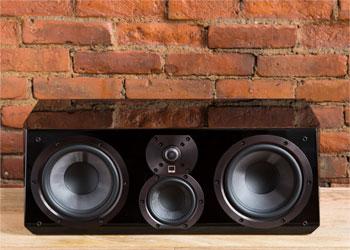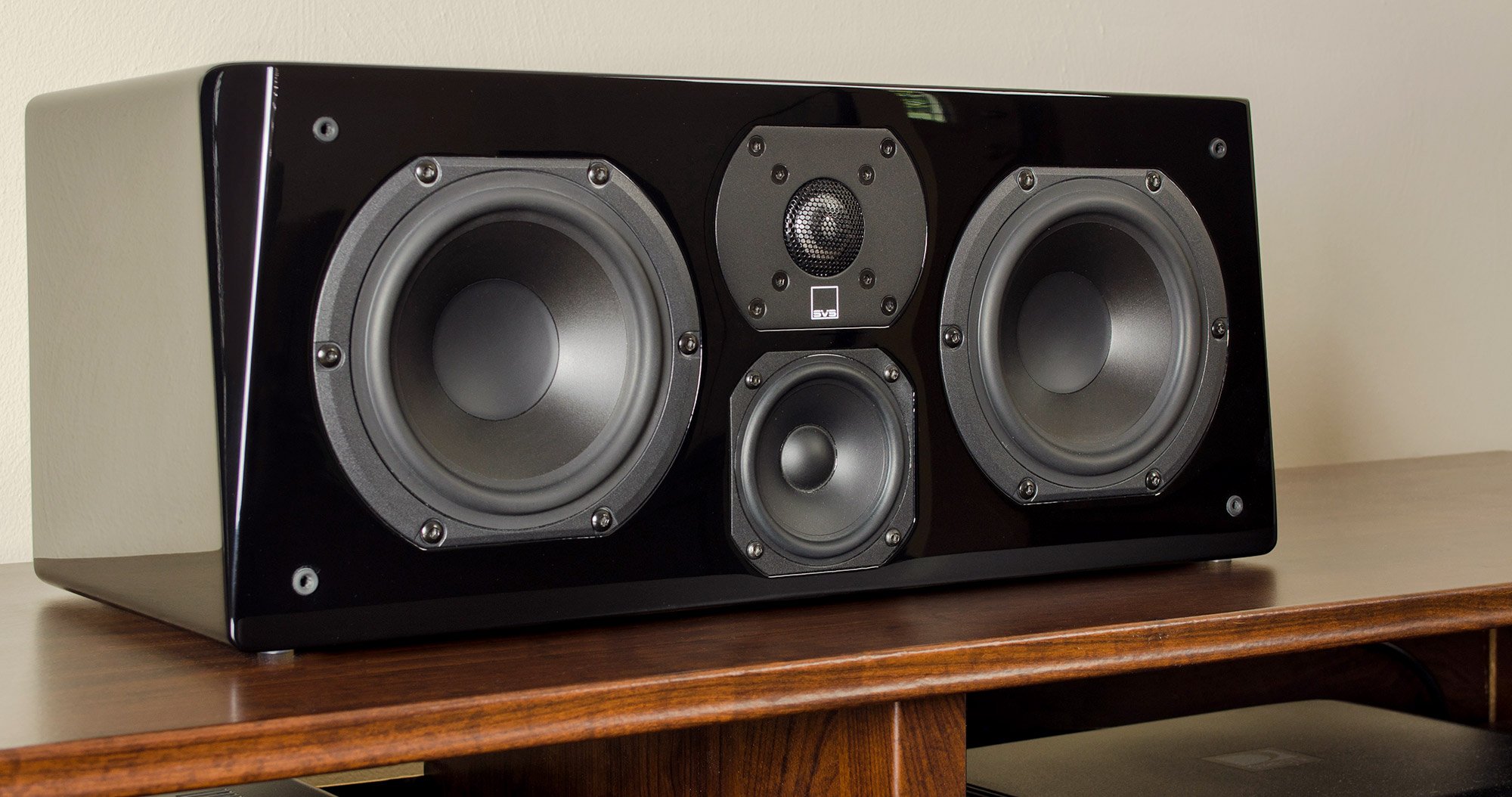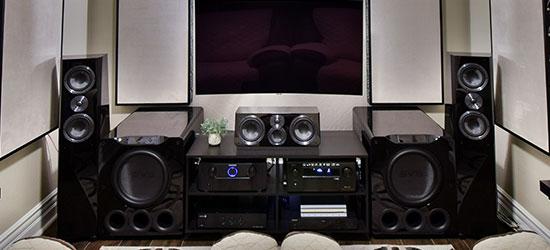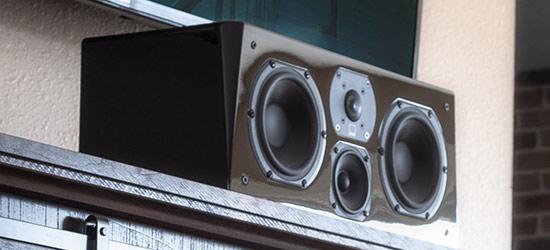Center Channel Speaker Placement Tips

While underrated, the center channel is arguably the most important speaker in a surround sound system since nearly 70% of all audio playback comes through the center channel at any given moment. It also handles the majority of vocals and dialogue in music and movies and ties all the action together across the front stage to create a palpable sense of realism. Proper placement is important because it tacks the vocals to the screen, and also allows effects to flow without breaks from left to right, allowing for the suspension of belief.
Like any high quality speaker, the center channel should be acoustically invisible. When searching for a center channel speaker, always look for a “three-way design” with vertically aligned tweeter and midrange. This allows it to perform closer to a full range speaker and also radiate a more disperse soundfield, while enabling the acoustic image to track correctly across the front stage.
Since center speakers are somewhat position ambiguous, it becomes even more critical to avoid lobing or irregularities in the dispersion characteristics. Your experience can be seriously compromised if a center speaker is not presenting the acoustic information evenly throughout the listening area. Once you have the best center channel speaker for your system, follow these placement tips to achieve optimal performance.
Center Channel Speaker Placement Tips

- If using a projector and an acoustically transparent projection screen, installing the center speaker at ear-height behind the screen makes for ideal placement.
- Center speakers fit great on top of an entertainment cabinet or easily on a shelf mounted above or below the TV screen. Just make sure the speaker in angled up or down towards the listener for best performance.
- For a large center channel that won’t fit in a piece of AV furniture, try stand mounting at ear level below the screen.
- Always place the center channel speaker as close to the screen as possible, whether in front or behind.
- If placed on furniture, align the speaker flush with the front edge to eliminate lobing of the sound waves which can negatively impact clarity and dynamics.
- Rubber doorstops or other non-abrasive wedge-shaped objects can be placed below the front edges of a center channel speaker to elevate the tweeter and drivers towards the listening area.
- When setting the angle below or above a screen, a laser pointer held against the top of center speaker can be used to accurately aim it to ear level in the main listening position.
If you have any questions about center channel speaker set-up or placement, ask in the comments or contact our Sound Experts at custservice@svsound.com.
Both SVS Ultra and Prime Center Speakers are a genuine 3-way design with a dedicated mid-range driver below the tweeter in its own acoustically sealed chamber, and flanked by two ported bass drivers, all using premium grade cross-over components to divide the side to its respective driver.
Audio System Setup Articles

5 Ways to Improve the Sound of Your TV

Which Sounds Better, Vinyl or Digital Music?

Why a Center Channel is the Most Important Speaker in Your Home Theater
Share Your Thoughts






